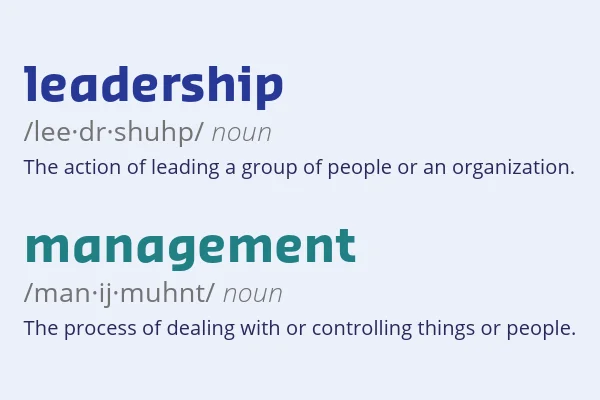Campus
Creating Connection Points & Strengthening Community


Diving into something new can be daunting. When facing unfamiliar situations or grappling with uncertainty, it’s only natural to experience some hesitation. These feelings are often magnified for those in leadership roles, who find themselves trying to navigate deeply engrained culture, longstanding practices, and existing networks of relationships, all while working to take the helm of a well-established organization and guide people in a new—and possibly uncharted—direction.
Fortunately, some universal tenets of effective leadership can be applied to any type of organization or team.
As leaders move from one role to another, or even one organization to another, maintaining a framework of core beliefs and practices can ease the transition”.
The tenth chapter of this year’s President to President series offers a great example of this. Hampton University President Lt. Gen. Darrell K. Williams (US Army, Retired) resonate profoundly describing how his long military career and subsequent roles in the private sector prepared him to oversee a modern, dynamic university. He identifies a few key lessons in leadership that he has carried through each of these transitions, such as the need to exhibit a deep respect for and understanding of an organization’s mission, as well as a willingness to truly listen to individuals at all levels.
President Williams’s story resonated with me, as I’m currently experiencing my own professional transition. In February, I became the new Sodexo CEO of Campus and Government Services in the U.S. I’m honored to have this opportunity to guide our campus teams in finding innovative ways to help students thrive while in college. However, I also recognize that I’m joining a large, robust, well-developed organization and that I’ll be leading many employees who have been with Sodexo for years, or even decades. While the company’s culture, practices, and relationships are something I’m working to quickly learn, these things are already fixtures of everyday life for the people I will be leading.
This is precisely why it’s so important to maintain a focus on the essential tenets of leadership, including a few key principles that I’ve developed over a lifetime of learning.
I began learning about team dynamics and leadership from a young age. I grew up in Boston with my seven siblings. When you come from such a large family, you learn pretty quickly how to work as part of a team. My parents instilled the value of hard work in me early on, allowing me to work in our family’s donut shop alongside my siblings as a child. I grew to enjoy the satisfaction of a job well done, and I got to see firsthand what it meant to be a good leader who can get people—even a rambunctious group of siblings—to work together effectively.
I may be new to my current role, but I’m not entirely new to Sodexo. I worked here as a young adult, and the company holds a special place of significance for me. At that early job, I was lucky enough to meet a lovely coworker who turned out to be an incredible woman. We got married and built a beautiful life together, raising three amazing children who are now young adults. As our journey unfolded, I found myself working in a variety of roles at different organizations. Each of those positions helped me hone my leadership style and equipped me to take on new professional challenges by sticking to a few essential ideas.
People First. My father used to say, “if you take care of your people, they’ll take care of your customers.” He taught me that our team members are the most valuable resource for any business. Employee retention and growth go hand-in-hand. And when employees know that their leaders genuinely care about them, they’re more likely to trust their guidance and stay committed to their objectives.
Leadership Over Management. Once you have a great team in place, trust them to do the work. Managers should be less focused on maintaining authority over their team members and more focused on adding value to the organization. A good leader knows how to get teams moving in the right direction and make sure they feel motivated—not micromanaged.
Clear Expectations and Accountability. Ensuring everyone at every level understands expectations is the best way to help your teams—and your organization—succeed. Communicating clear goals encourages collaboration and innovation. Good leaders make sure every employee has a clear idea of who their customer is and what kinds of experiences they seek.
A Willingness to Evolve. In most businesses, change is the only constant. Effective leaders always have a plan, but they also know how to stay agile and adapt to evolving realities. Whether it’s shifts in consumer behaviors or the effects of young people entering the workforce, leaders must always be ready for something new.
Humility. We are only as successful as the teams we guide. Staying humble and grounded makes leaders more accessible to their people and better able to understand their perspectives and concerns.

As a leader, I’m always thinking about what’s next. But I also recognize the value of really listening and taking the time to consider all factors and perspectives. Although effective leadership demands a degree of agility, I take great care when making decisions, staying mindful of any potential reverberations that could impact my teams and our partner campuses.
There are, no doubt, challenges on the horizon for higher education. No one can say with certainty what the future holds or what the industry may look like in a few years. But I do know that, despite these challenges, Sodexo will be ready to help campuses adapt and evolve. Since assuming my new role, I’ve been impressed by the incredible foundation our teams have built. Whatever the future holds, I know we can achieve great things because of the passion, energy, and dedication to success I’ve already seen from so many of our people, along with their unwavering commitment to helping students thrive on campus.
Creating Connection Points & Strengthening Community

Confidence, Culture, and Connection: How Sodexo Helps Students Thrive Beyond the Classroom

Helping College Students Find Balance Between Wellness and Comfort

Botrista: Meeting Student Demand for Craft Beverages on Campus
